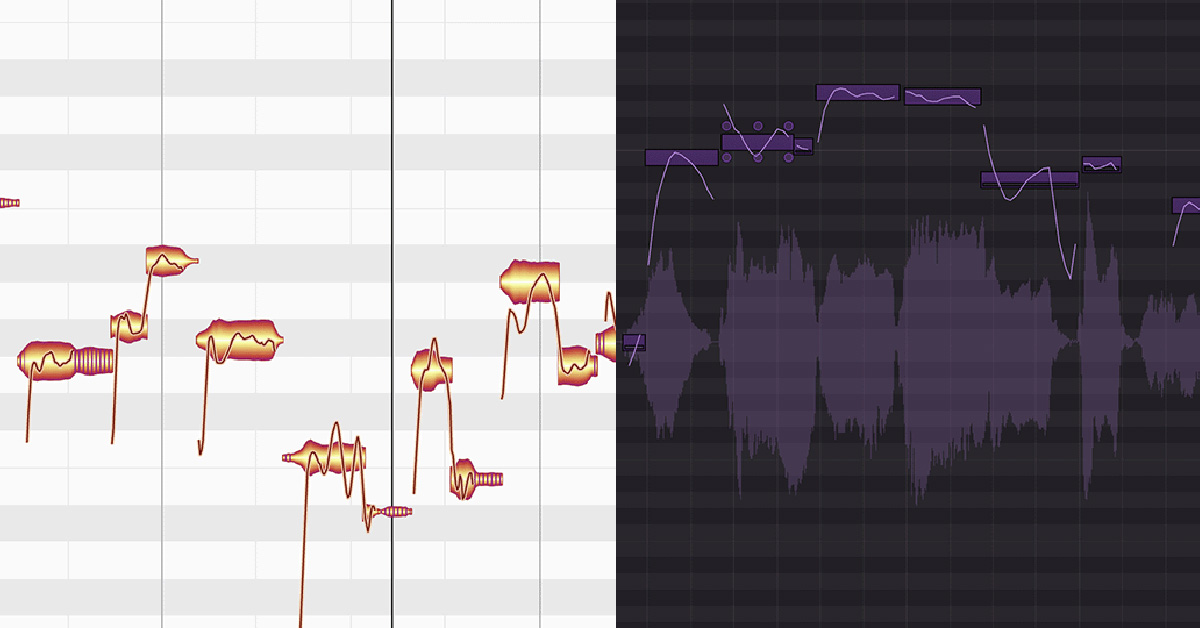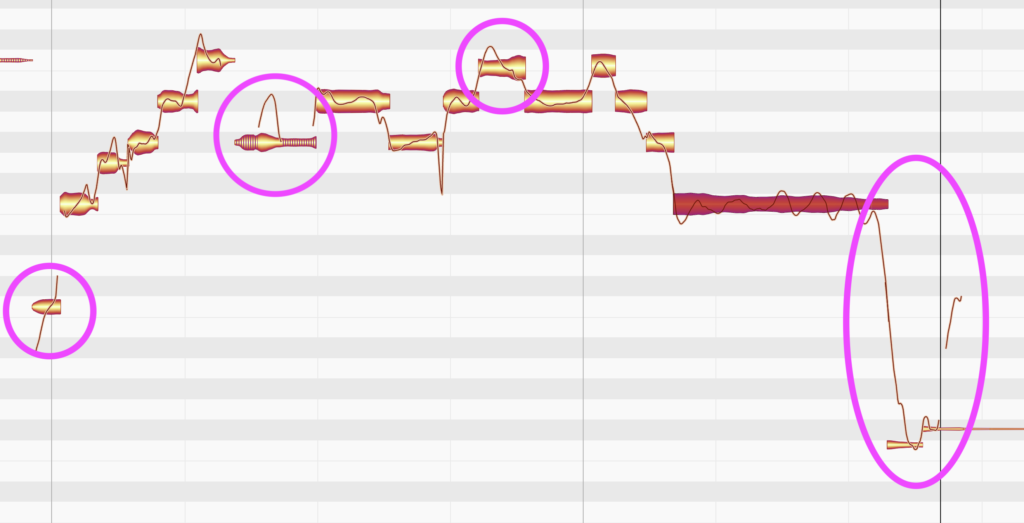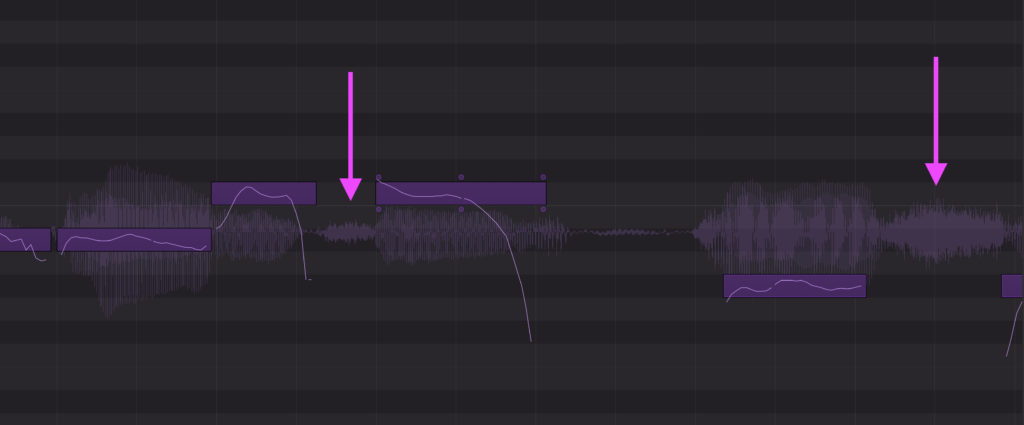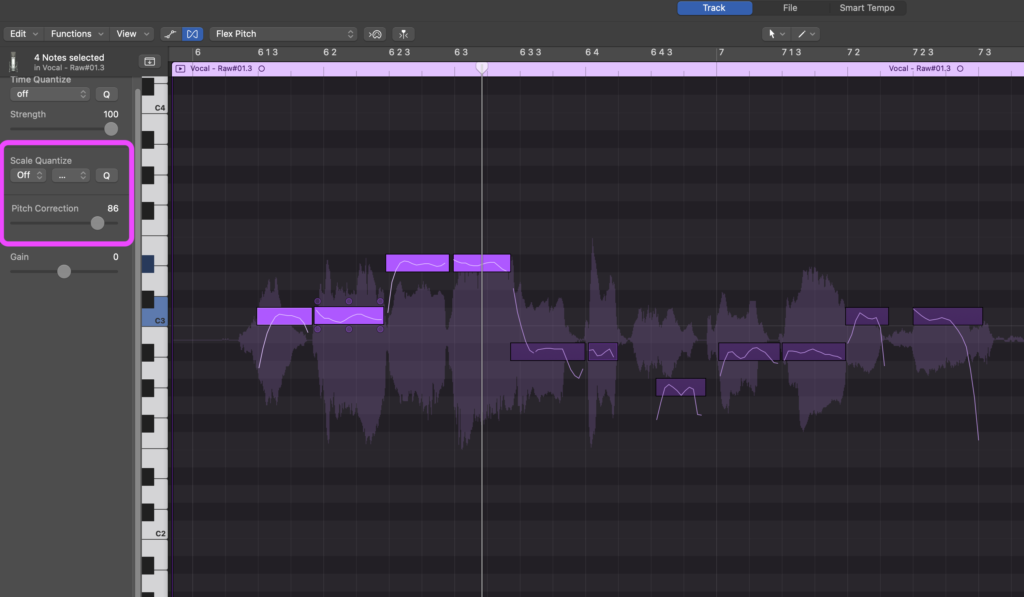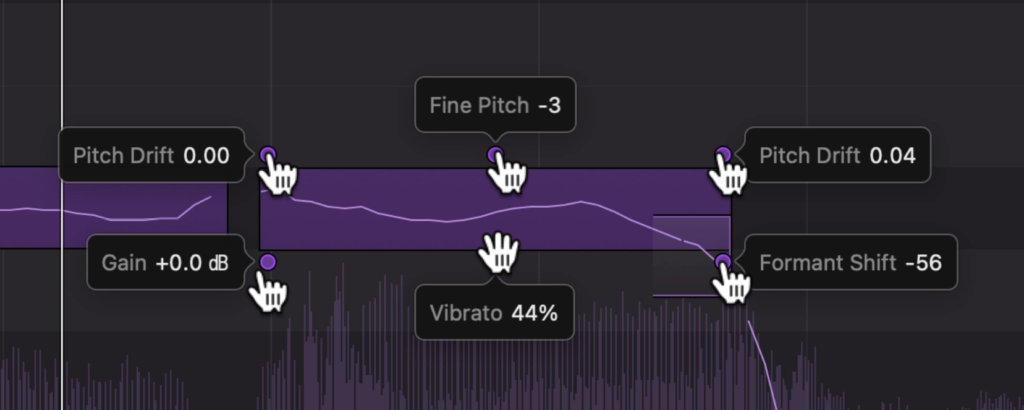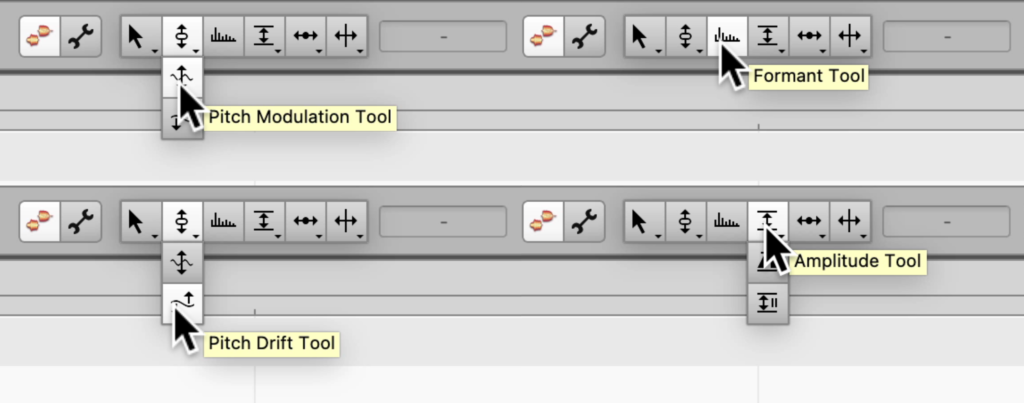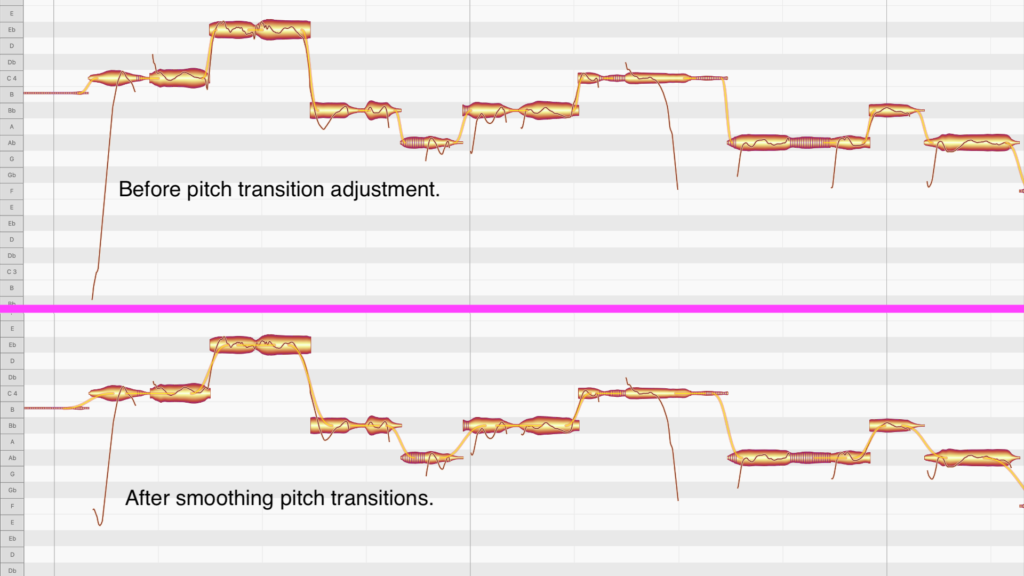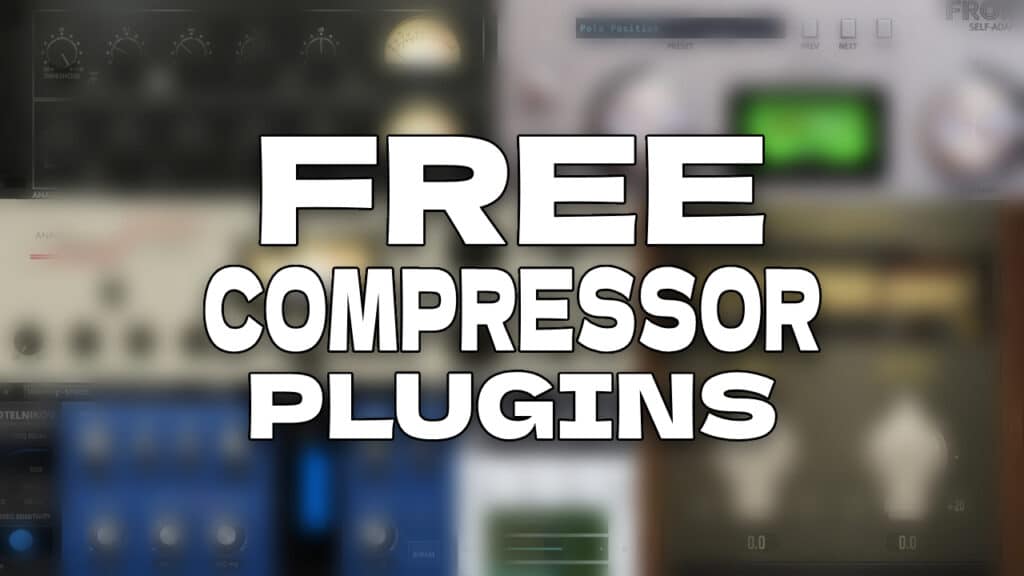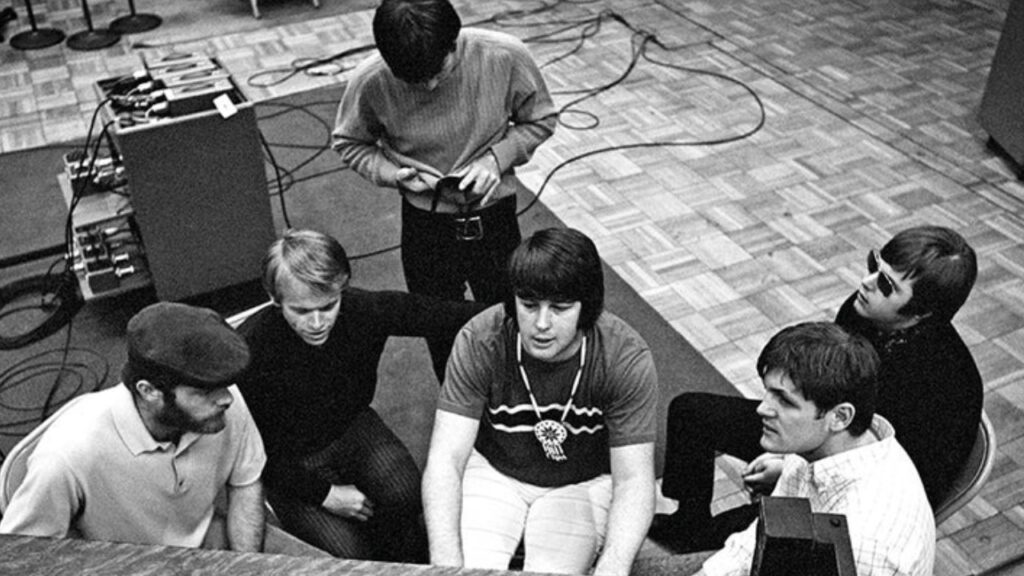When Apple released Logic Pro 10.0 in 2013, one of the most captivating and criticized additions was Flex Pitch, an additional Flex algorithm that could be accessed along with Flex Time on any audio track. Flex Pitch brought native monophonic pitch detection and pitch correction to Logic Pro, and while some touted it as a game-changer for music producers and recording enthusiasts, others thought it to be inferior to professional pitch correction software, like Celemony’s Melodyne. The introduction of Flex Pitch certainly was an important update, as it opened up new possibilities for musical artists, allowing them to manipulate and refine the pitch of individual notes within a recording, making vocal tuning accessible to anyone with a copy of Logic Pro.
I love Logic Pro and I’ve been using Logic for almost 20 years, but I’ll be frank—when I first started using Flex Pitch in 2013, I found it to be substandard when compared to Melodyne. On almost every vocal example I used it, it would instantly introduce noticeable artifacts, even before tuning the vocal, and this made it unusable for professional applications. After years of trial and error, I came to the conclusion that Flex Pitch worked okay on higher-pitched female vocals, like sopranos and mezzo-sopranos—I could get something that was passable by hiding the artifacts with reverb and other time-based effects in the mix; but altos, tenors, baritones, and anyone with a bit of ‘grit’ in their vocal character would almost always be disappointed by the results.
Despite all of this, Flex Pitch seemed pretty popular upon its release, at least with my mix clients at that time. Regardless, when I got mix projects from clients that tuned their own vocals with Flex Pitch, I would almost always remove their Flex Pitch edits, and retune the vocals with Melodyne. An important consideration here is that many Logic Pro users are home studio enthusiasts, not professional recording engineers—they record their own music, record their band, or produce for and collaborate with other musicians in a home studio environment. These are musicians and producers working on a home studio budget, and with Logic Pro costing only $200 USD, and Melodyne 5 Assistant costing $249 USD, you can see why home studio enthusiasts might shy away from Melodyne, when you can get a fully-functioning DAW with vocal tuning capabilities built-in for less than the price of the most comparable version of Melodyne. Not to mention the tricky learning curve.
It’s now been over 10 years since Flex Pitch was released, and I figured I would give it another shot. From my conversations with some of the Logic developers at Apple, I know that they have gone to great lengths to consistently improve Flex Pitch, with almost every Logic update receiving some type of improvement to the algorithm. And I have to say, I’m quite impressed with the results I was able to achieve this time around! However, your results may vary—this is just one example of my own vocal that needed fairly aggressive pitch correction to fit right with the musical example. I would consider myself a low tenor, I don’t have a lot of ‘grit’ in my voice, but in my previous attempts to use Flex Pitch, I was never able to get a result I was happy with. This attempt, along with numerous other experiences I have had with Flex Pitch in recent years, details the improvements Apple has made to Flex Pitch in the most recent versions of Logic Pro.
MUSICAL EXAMPLE
Next, let’s talk about the musical example. The vocals are recorded with a Golden Age GA-251 tube condenser microphone, going into an Apogee Symphony I/O preamp, and then sent over to a Golden Age Comp-2A optical compressor, which is applying around 2-3 dB of reduction to control the dynamics. The compression was printed into the raw vocal example, before hitting Melodyne and Flex Pitch. No EQ or other effects have been added to the vocal.
The vocal example itself is intentionally not ideal. This is a single take and has not been comped together from multiple takes. The goal here is to showcase what Melodyne and Flex Pitch are capable of, using fairly aggressive vocal tuning. While I am a pretty good musician, I am not a professional singer, so my ability to consistently hit pitches on point is mediocre at best.
Listen to the following musical examples: Version A is my raw vocal recording with the backing track, Version B is a fully tuned vocal with Melodyne, using features that are all included with the Assistant version of Melodyne, and Version C is a fully tuned vocal with Flex Pitch. Don’t just listen to how well each example is in tune, but also listen to how the vocal timbre changes from example to example. Studio monitors or headphones are recommended.
EDITING IN MELODYNE AND FLEX PITCH COMPARED
In the latter two examples, I have applied 100% pitch correction to most notes to snap them to the pitch grid, avoiding tuning consonants that do not contain pitch information, as this can result in unnecessary artifacts. I also regularly avoid tuning portions of the vocal where the pitch is variable and should not be quantized to a specific pitch (see Figure 1). Generally speaking, I try to tune the vowel ‘meat’ of the notes, and avoid tuning the shorter areas where the pitch is less stable. In some cases I’ve applied fine tuning to bring notes slightly off the grid, looking at the actual pitch line for my pitch reference, rather than relying solely on the extrapolated note.
Figure 1. Some notes left untuned, due to variable pitch.
It should be said that Melodyne and Flex Pitch are not exact copies of each other. Each has its own unique editing features that differ from the other. Flex Pitch has a unique feature I particularly like, that Melodyne does not. If you delete a note in the Track editor, this does not delete the note, but rather removes all tuning parameters from the note, and plays that area completely untuned (see figure 2). Flex Pitch does a great job of blending these untuned areas in with the tuned areas. Flex Pitch will also often skip consonants in its analysis, so you are not accidentally tuning consonants, which again, have no pitch information.
Figure 2: Untuned consonants in Flex Pitch.
Double-clicking on a note in Flex Pitch will snap the note to the nearest note on the pitch grid, and dragging up and down will change and snap the pitch chromatically. ‘Scale Quantize’ can be used to limit the notes to a specific key, and the ‘Pitch Correction’ can be used to apply a variable amount of pitch correction, between 0-100% (see figure 3).
Figure 3: Tuning options in Flex Pitch
Notes in Flex Pitch have six points, or ‘hotspots’, that can be clicked and dragged to adjust various note parameters: fine-tuning, left and right pitch drift, gain, vibrato, and formant shift (see figure 4). I used all of these hotspots, save for the gain adjustment when tuning my vocal with Flex Pitch.
Figure 4: The six ‘hotspots’ used for adjustments in Flex Pitch
Melodyne is not without its own unique and helpful features. It too, allows you to double-click on notes to snap them to the pitch grid; however, you can hold option with the main tool and make fine-tuning adjustments. Specialized tools are available for making vibrato adjustments (Pitch Modulation Tool), pitch drift adjustments (Pitch Drift Tool), formant shifts (Formant Tool), and gain adjustments (Amplitude Tool) (see figure 5).
Figure 5: Melodyne pitch, formant, and amplitude edit tools.
Additionally, Melodyne’s main Pitch Tool also allows you to adjust the pitch transitions between notes, a feature not available in Flex Pitch (see figure 6). This is one of my favorite features in Melodyne, as it allows for pitch transitions between notes to be smoothed out a bit, creating a more natural effect, even when applying heavy pitch correction.
Figure 6: Melodyne pitch transition adjustments.
Another big difference between Flex Pitch and Melodyne is how pitch drift adjustments are handled. Melodyne has a single Pitch Drift tool that helps to center the pitch drift on each note—an extremely valuable tool when a singer’s pitch drifts sharp or flat on long notes. Flex Pitch offers independent pitch drift control on the left and right side of each note, which sounds like a great thing, and it is; but I’ve found that sometimes this leaves the middle part of the note still not quite where I want it on the pitch grid, so I end up making a left and right pitch drift adjustment, plus an additional fine pitch adjustment to make it work (see figure 7). A few extra steps, but you can achieve a similar result.
Figure 7: Pitch drift adjustments in Flex Pitch.
SONIC QUALITY
The last topic I want to address is the difference in end-product sonic quality. In my opinion, Flex Pitch tends to more drastically affect the timbre of the vocal. In the Melodyne example below, the mid-range presence and saturation from the tube mic are still present and fairly unchanged from the original raw vocal, with a few noticeable tuning artifacts here and there. With the Flex Pitch example, it’s like the mid-range presence has been ‘glossed over’ a bit—like taking a gloss varnish and applying a thin layer to a matte painting. It’s not objectively a bad thing. Especially if you have a really nasally mid-range vocal character like myself. You might actually like how the effect smooths out your vocal character. However, my preference is to preserve the original timbre and energy of the vocal as much as possible, even when applying heavy vocal tuning. I can fix things like nasally vocals with EQ later on in the mix process.
Here are the same three examples from earlier, with the music muted, and the vocal isolated. The difference in tonal character and artifacts introduced are a bit more obvious in these examples. Version A – Raw Vocal, Version B – Melodyne Vocal, and Version C – Flex Pitch Vocal
THE WINNER?
Am I ready to give Melodyne the boot and just use Flex Pitch?—No. Melodyne is an essential part of my production workflow. I use it just about every day when I do vocal production work, and it’s an invaluable tool that has paid itself off multiple times over. In my opinion, Melodyne provides a more transparent way of tuning vocals, and it does a better job of retaining the original vocal timbre; however, I am thoroughly impressed by how much Flex Pitch has improved over the last decade. Going from ‘unusable’ to a totally viable option for home studio producers and musicians, when used the right way. In recent years I have actually taken to leaving many of my clients’ Flex Pitch tuning on their tracks, as many artists have grown to love the sound.
VOCAL TUNING TIPS
Before I wrap up, I’ll leave you with a few tips and tricks that will help with improving your end result, when vocal tuning with Melodyne or Flex Pitch.
- Record several takes of the vocal and comp them together. When I can, I like to comp the vocal before the vocalist leaves the studio, to get an idea of the end result. If the composite is not stellar, do a few more takes until you get it right, punching in areas that need the most help. Focus on getting the best takes you can up front, because ultimately, the better the take, the less vocal tuning you’ll need in post.
- I like to add a little bit of compression to the vocal on input; however, do not overdo it with the recorded effects. Sometimes excessive EQ and compression adjustments during the recording phase can adversely affect the pitch analysis in post.
- If you are anticipating a vocalist who will need aggressive vocal tuning, try recording at a higher sample rate like 88.2 kHz or 176.4 kHz. This gives you more samples to work with, and can often result in better quality processing and pitch manipulation; however, you will need to have an audio interface that supports these higher sample rates and a computer that can handle the additional processing power needed.
- Tune the ‘meat’ (vowel) areas of a vocal, and leave the front and back end of notes untouched. Avoid tuning consonants, as these do not have any pitch information.
- Higher-pitched vocals will generally work better with any vocal tuning software, and hiding the artifacts produced will be easier. Lower-pitched vocals will need a bit more attention to detail, as they generally result in more noticeable artifacts.
- If a note sounds better untuned, leave it untuned—not all notes need correction.
CONCLUSION
Celemony really has created something special with Melodyne, which to this day, stands out as a unique and powerful tool in the realm of audio processing and manipulation, while Flex Time is a fully viable option for budget applications. It is crucial to remember that, ultimately, the quality of music relies heavily on the skill and artistry of the musicians, the expertise in recording and editing, and the creative choices made during the recording and mixing processes. While tools like Melodyne and Flex Pitch enhance the possibilities, they are just one element in the broader landscape of creating exceptional recordings.
ABOUT THE AUTHOR
Joshua Carney is a lifelong musician, composer, music producer, mixing and mastering engineer, and educator in the fields of music, audio production, and contemporary music technology. He holds a Bachelor of Arts in Music from Grand Valley State University and a Master of Music in Music Composition from Central Michigan University. In his role as Program Manager of Music Production Online at The Los Angeles Film School, Carney plays a pivotal role in shaping the program and is responsible for developing video and textual content for both Associate and Bachelor’s degree programs. He has also taught music technology courses at the University of Tampa, St. Petersburg College, IADT, and Central Michigan University. Carney is the owner of Carney Media Group, and has produced content for The Tonight Show, Native Instruments, Antares, UVI, EastWest, Soundtheory, Boombox.io, SKAA Audio, and many more. He has produced, mixed, and mastered music for artists worldwide, spanning a multitude of genres. Check out Carney’s YouTube channel–MusicTechHelpGuy.
EXTRAS
Assess your knowledge of essential audio concepts using our growing catalog of online Quizzes.
Explore more content available to Subscribers, Academic, and Pro Members on the Member Resources page.
Not a Member yet? Check the Member Benefits page for details. There are FREE, paid, and educational options.

